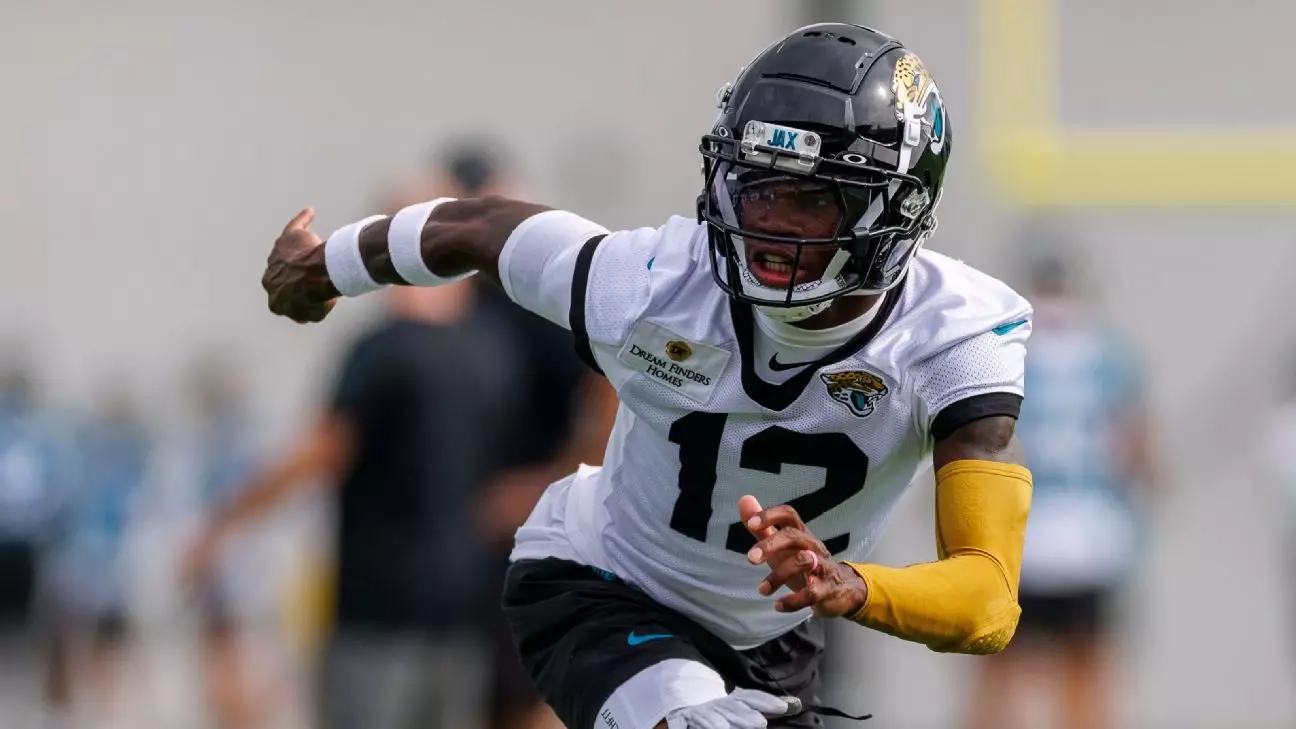The concept of a two-way player in professional football is an anachronism, a relic of a bygone era when players like Chuck Bednarik shuttled between offense and defense with relentless dedication. In today’s NFL, where specialization is king, the idea of transforming a rookie into a dual threat seems more like a glossy fantasy than a viable strategy. Yet, Travis Hunter’s attempt to walk this tightrope highlights an alluring but ultimately flawed aspiration — the hope that versatility can redefine a player’s value in the league. It’s a concept that smacks of romanticism rather than practicality, glossing over the complexity and physical toll such a feat entails.
In the modern game, the physical and mental demands on players are staggering. Expecting Hunter to master two opposing playbooks, adapt to fast-changing scenarios, and excel at both positions is ambitious to the point of recklessness. Coaches may admire his determination and raw talent, but behind the façade lies a looming threat of burnout, injury, and unfulfilled potential. The NFL has long shifted towards hyper-specialization for a reason: it maximizes efficiency and reduces risk. To challenge that norm by attempting to bring back the two-way player is to flirt with the folly of idealism in a ruthless, results-driven league.
The Perils of Overloading Young Talent
What’s most concerning — and perhaps most revealing — is the approach of the Jacksonville coaching staff. Their incremental method, isolating Hunter on offense and defense on separate days, is a cautious acknowledgment of the impossible task ahead. Yet, it also underscores how ill-suited such a pursuit is for the modern player. The notion of “starting slow” and gradually building up to full dual-role responsibility may sound sensible, but it also raises questions: Is this strategy genuinely sustainable? Or is it merely a band-aid on a fundamentally flawed concept?
Hunter’s mental fatigue becomes an inevitable byproduct of this relentless duality. The difficulty of memorizing two distinct playbooks, deciphering different terminologies, and shifting mental gears so quickly is enormous. It’s a classic case of a high-potential athlete being set up for mental overload. Moreover, the physical toll is seldom discussed openly but looms large behind the scenes. The risk of injury exacerbates when players are asked to perform at high intensity on both sides of the ball — a gamble that could impoverish Hunter’s career before it even truly begins.
Is the NFL Ready for a New Kind of Player?
Despite the cautions, there’s a certain romantic allure within the league that still champions the all-around athlete. It’s rooted in a nostalgic longing for a more versatile, gritty brand of football — a desire to see players embody a relentless, primal toughness that only two-way prospects seem to represent. But this yearning neglects the harsh realities of modern athletic training, sports medicine, and the longevity of NFL careers. The game has evolved, and so should our expectations.
Broadly speaking, the obsession with versatility risks overshadowing the virtues of specialization. When a player is pulled in multiple directions, their development in one particular domain inevitably suffers. Hunter’s case is emblematic of this: the more he stretches himself across positions, the less likely he is to master them fully. This dilution of focus compromises both his performance and the team’s strategic integrity.
There’s also an undercurrent of inconsistency in this approach. Relying on one player to be a “hybrid” on a consistent basis creates vulnerabilities — both mental and physical. The NFL’s complexity demands that players be deeply proficient in their roles, rather than jack-of-all-trades. Hunter’s journey hints at an underlying tension in football’s evolution: the desire to innovate versus the necessity of optimizing human capability within proven frameworks.
A Reckless Experiment or a Necessary Evolution?
Ultimately, Hunter’s ambitious endeavor underscores a broader debate within the sport: Should the league embrace more dynamic, multi-faceted players in pursuit of strategic unpredictability? Or is this just a misguided detour that undervalues the importance of specialization? From a center-left liberal lens, the emphasis should be on protecting players’ well-being, safeguarding their career longevity, and fostering sustainable teamwork dynamics.
Encouraging young athletes to be super-human isn’t progress; it’s a gamble with their health and future. Instead, the NFL should focus on nurturing the best specialized talents, ensuring they have the time, resources, and support to reach their full potential in one domain. Hunter’s case should serve as a cautionary tale — emblematic of sports innovation gone awry when driven more by spectacle than practicality.
The league’s obsession with pushing boundaries must be tempered by a firm commitment to athlete safety and holistic development. While the idea of resurrecting the two-way player might seem charming, it’s ultimately a misguided aspiration in the brutal reality of today’s NFL. Focus, specialization, and sustainable career growth should take precedence over fleeting attempts at legacy-breaking versatility.

Leave a Reply